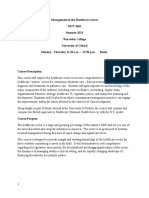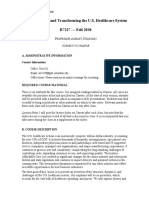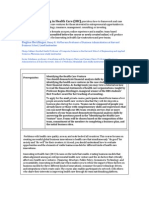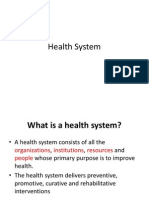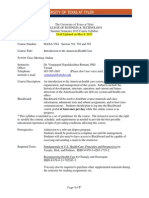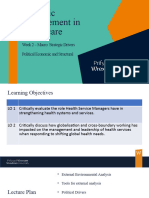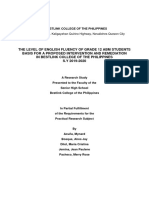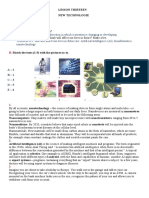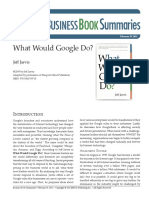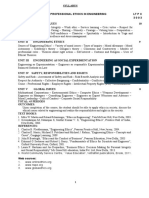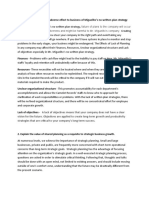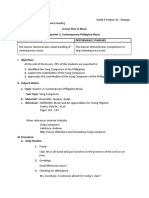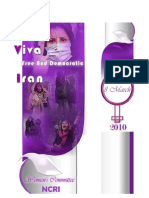0% found this document useful (0 votes)
93 views5 pagesCourse Layout May 2010
This document outlines an introductory course on health policy and management. The course aims to familiarize students with opportunities and challenges in the health industry by discussing the structure of the health system, fundamentals of health policy and economics, and challenges of managing health organizations. It also covers the roles of the pharmaceutical industry and global health initiatives. The target audience is MBA students interested in healthcare leadership. Students will be evaluated based on case discussions, class participation, and a final exam covering required and additional readings.
Uploaded by
edris9788Copyright
© Attribution Non-Commercial (BY-NC)
We take content rights seriously. If you suspect this is your content, claim it here.
Available Formats
Download as PDF, TXT or read online on Scribd
0% found this document useful (0 votes)
93 views5 pagesCourse Layout May 2010
This document outlines an introductory course on health policy and management. The course aims to familiarize students with opportunities and challenges in the health industry by discussing the structure of the health system, fundamentals of health policy and economics, and challenges of managing health organizations. It also covers the roles of the pharmaceutical industry and global health initiatives. The target audience is MBA students interested in healthcare leadership. Students will be evaluated based on case discussions, class participation, and a final exam covering required and additional readings.
Uploaded by
edris9788Copyright
© Attribution Non-Commercial (BY-NC)
We take content rights seriously. If you suspect this is your content, claim it here.
Available Formats
Download as PDF, TXT or read online on Scribd
/ 5




